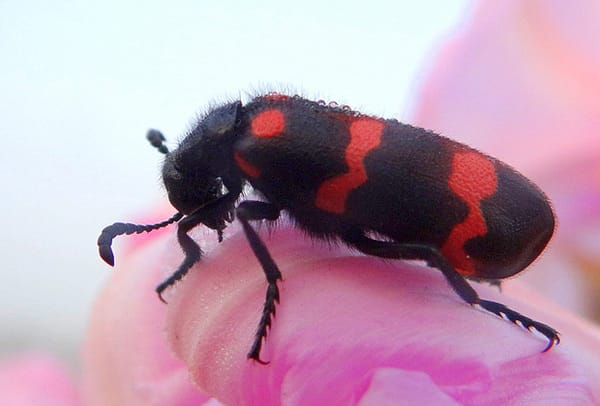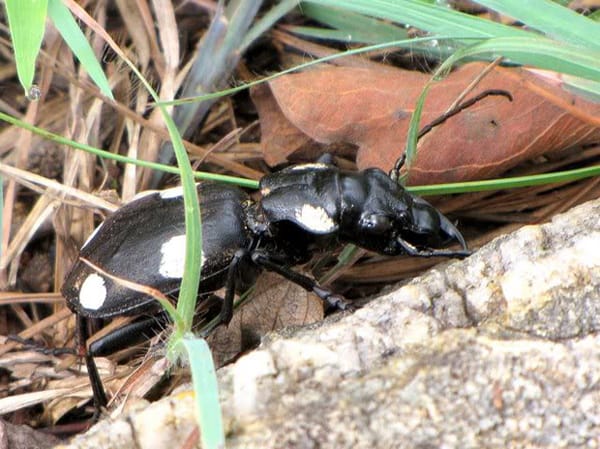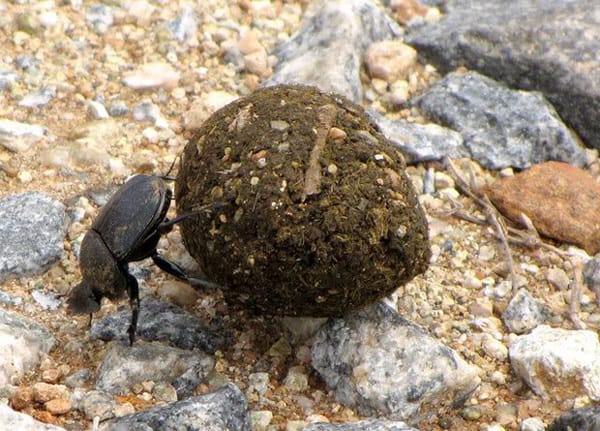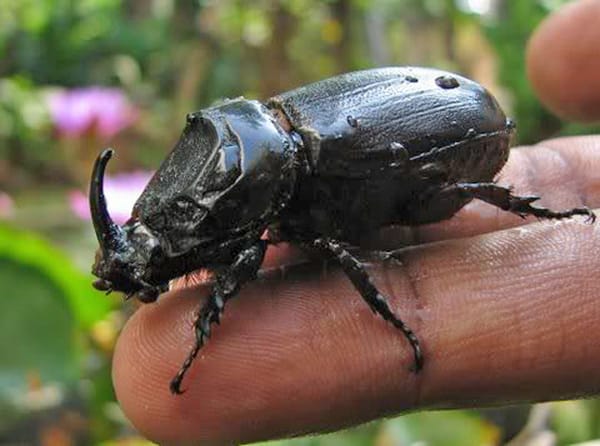When we are scared of creatures, we often don’t look closely at them… and so miss out on seeing how beautiful they can be. We often categorise a lot of insects as “bugs” and try to stomp on them!
However, beetles are slightly different from bugs. Click here to find the major differences between bugs and beetles.
We can observe beetles closely in our own gardens… but be careful in handling them. Some are harmless, but others can pack a wallop!
Here is a Blister Beetle.This is called so because touching it alarms the creature, and it releases a fluid which raises blisters on human skin. But see how beautiful it looks, with the dewdrops on its body!

Pic: Deepa Mohan
Here’s the Six-spot Ground Beetle. Look at the jaws… it can hurt when it snaps together those pincer-like jaws. So, keeping one’s distance is advised.

Pic: Deepa Mohan
Another very interesting beetle is the Dung Beetle; this actually collects waste material, and rolls it along to its underground nest. Here, it lays eggs on the material, so that the hatched young ones have food to eat!

Pic: Deepa Mohan
Here’s a video of the Dung Beetle rolling the ‘dung’ along.
This is a Rhinoceros Beetle, named so because of that ‘horn,’ that looks like a rhino’s!

Pic: Deepa Mohan
I hope this makes people look at beetles…with respect, without fear!
These beetles can often be found in our own backyards.
These beetles can often be found in our own backyards.